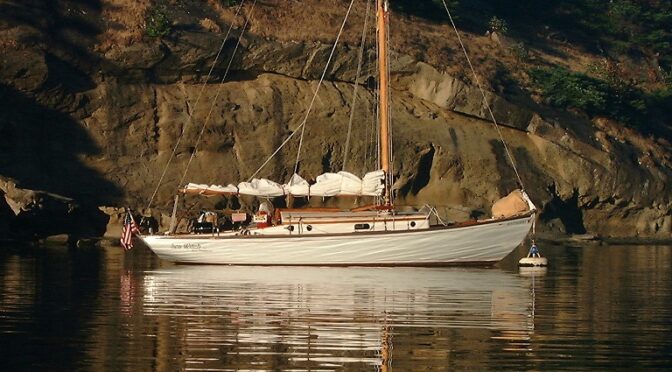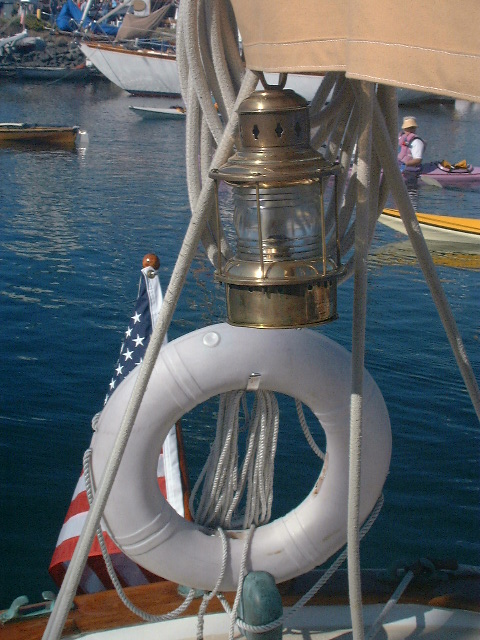I’ve owned many wooden boats, including a 1960 Star when I was a kid, a 1960 40′ Kettenburg in my 30’s and a 1940 Monk Sr. 45′ powerboat. Our largest was a Cheoy Lee Offshore 50 Nancy and I sailed down to Mexico for awhile. There has always been a discussion of modern vs. the enjoyment of vintage. With Sea Witch, we took off much of the modern stuff and returned her to a properly-outfitted 1939 boat. There’s a wood stove, but also a butane cooktop and barbeque. There’s a radio and VHF radio, but no radar with all its cumbersome equipment. There isn’t hot running water, but the stove and a kettle provides good hot water (and besides, showers are available in every marina). There’s the old ceramic head but the holding tank is hidden. There isn’t a foredeck windless, because it’s only a 30′ boat and “hand over hand” works just fine. We have never regretted this plan. Few things ever break or require repair. It’s a very easy and fun way to have a boat.
Old boats need refastening when the original screws and bolts wear out. The last owner, Rob Abernathy (a boat builder with a solid reputation in Sydney British Columbia) refastened the entire bottom and replaced the keel bolts in 1998. This gave Sea Witch a solid beginning for her next seven decades.

In 2003 and 2003, Larry Eifert stripped the hull above the waterline, removed and renewed all caulking and replaced many hull screws. This took about one week per side. All questionable fastenings were either removed and replaced, or new screws put next to old ones. No broken frames were found, and in fact it’s doubtful SW ever has had any broken frames. She has passed all surveys with flying colors since the Eiferts have owned her. When an occasional bleeding fastening is found, it’s replaced on the next haulout. This is a sturdy, well-built boat with a clean hull.
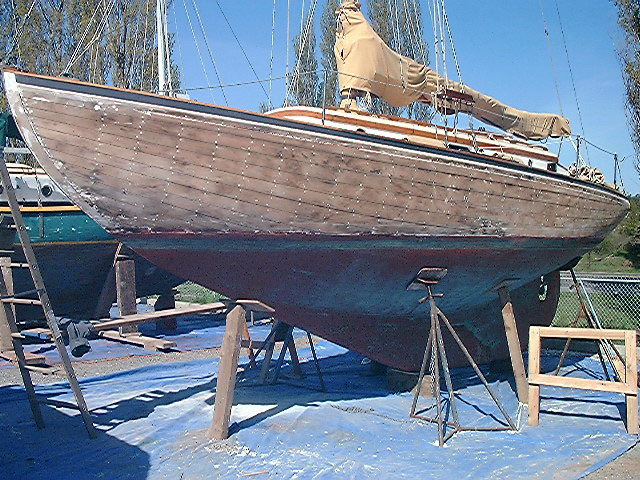
New cutless bearing and new prop in 2005, along with new bolts inside on the shaft stuffing box. The shaft zinc is the only one required.
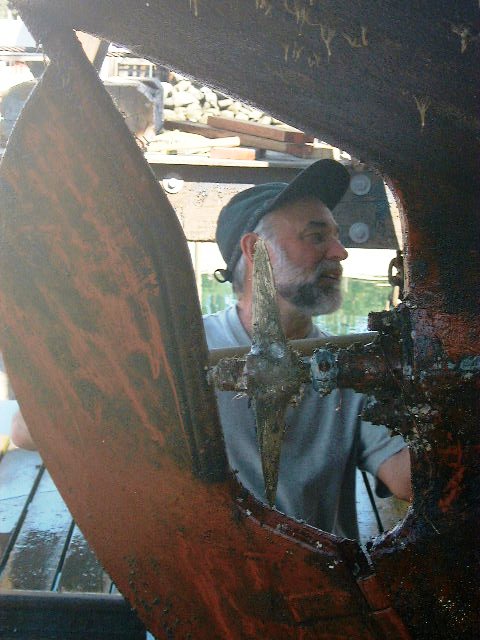
It took some years of looking on Ebay and boat stores, but Sea Witch now has EIGHT matching bronze winches (she came to us with two). Two for the halyards, two for the jib winches (the big ones in the photo), two for the spinnaker (one is seen here behind the jib winch), one for the main sheet and one for the spinnaker halyard. They look like they’ve been on the boat since it was built. In fact, one of the real strengths of this boat is the amount of original cast bronze fittings she has. Winches, running lights, cleats, vents, mast gooseneck with belaying pins and other hardware are original, and more difficult to find these days than the wood. You can still buy wood – but to buy a bronze casting is very dear and difficult indeed.
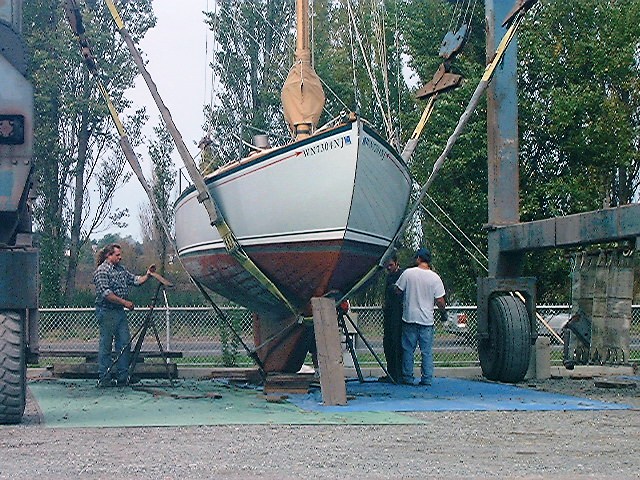
Discreetly hidden in this new cabinet are the drop-out depth sounder, VHF radio and the stereo. Barometer is outside the sounder cabinet . SW comes with a complete set of charts for the Puget Sound region, plus a bunch of other charts reaching to Southeast Alaska.
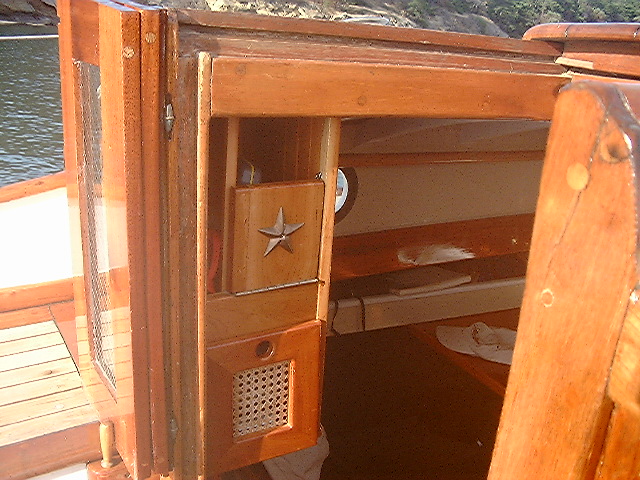
This Little Cod wood stove keeps the cabin toasty. A wooden top covers it when not in use and serves as more countertop space. A butane burner is also used for cooking and there’s a propane barbeque. The original icebox and sink are next to this area to the right. In these other photos in the Log, you’ll notice there is a two burner propane stove instead of the wood cookstove. We swap them out occasionally. In August, it’s usually too hot for the wood stove, so in goes the propane cooker.
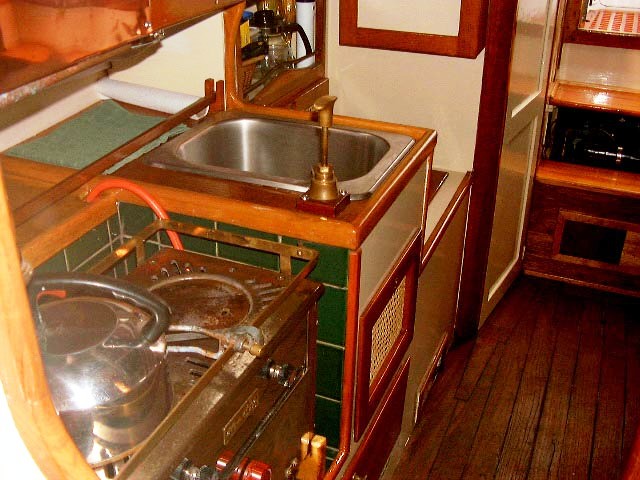
Since 2001, Sea Witch has gained a new 130% jib and cruising main. She has good (but not new) working 100% heavy weather jib and cruising spinnaker. Completely new standing and running rigging was installed in 2003 by the Shipwright’s Co-op in Port Townsend. New sail covers, a cockpit rain cover and a larger winter cover were built in 2007.
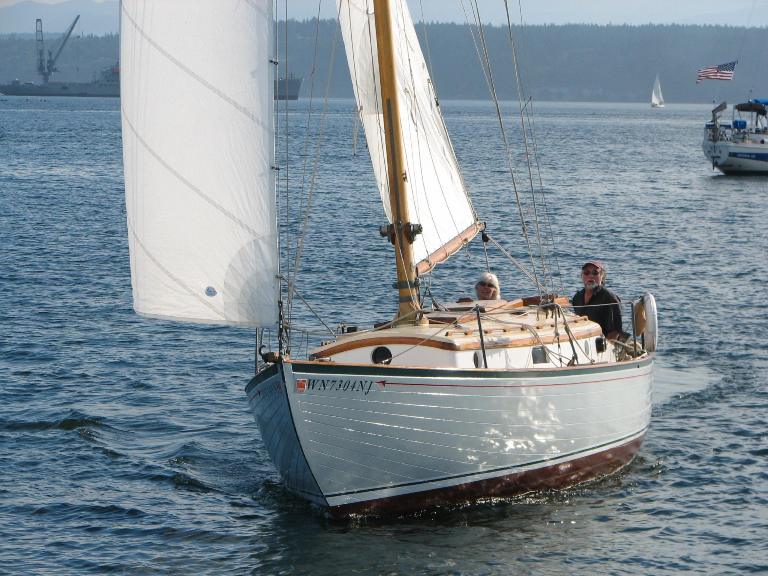

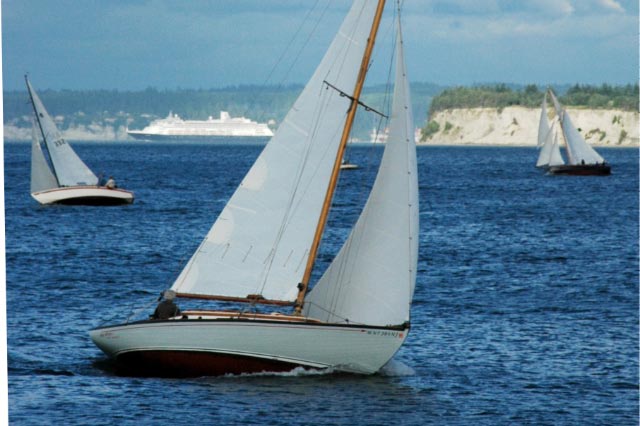
There are three washboards for the main hatch, providing a high level of security in foul weather, but this IS Puget Sound where there’s more of a chance for too little wind than too much wind. A three-door combination hatch was one of the first refinements installed in 2002. The accordion door top part features unbreakable wire glass. This hatch folds back to the port side, while the bottom hatch slides out to top. It’s offers a great view from the cabin and also adds more light below. In 2009, all other glass, including the five portlites with two opening portholes were removed and all glass replaced with new plate.

